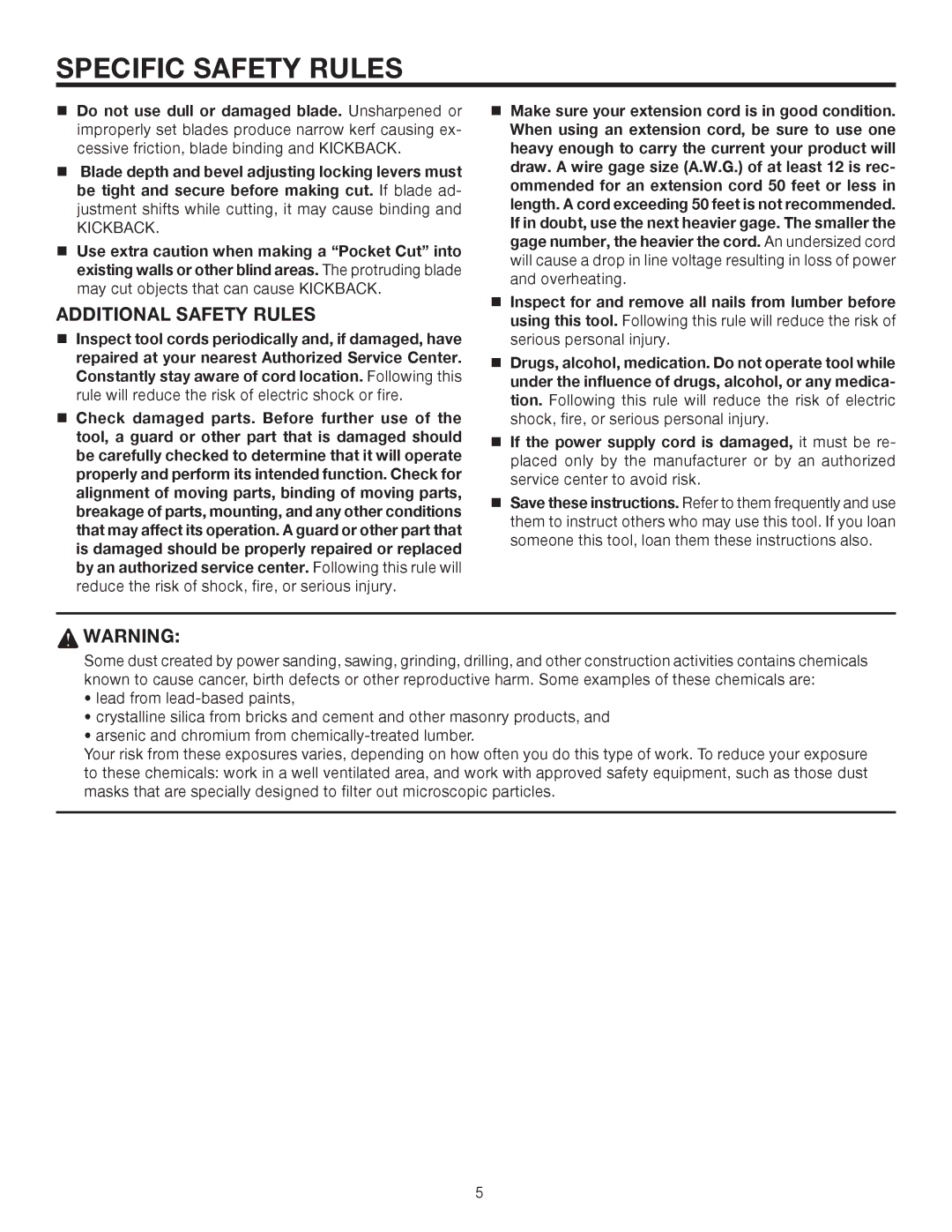
SPECIFIC SAFETY RULES
Do not use dull or damaged blade. Unsharpened or improperly set blades produce narrow kerf causing ex- cessive friction, blade binding and KICKBACK.
Blade depth and bevel adjusting locking levers must be tight and secure before making cut. If blade ad- justment shifts while cutting, it may cause binding and
KICKBACK.
Use extra caution when making a “Pocket Cut” into existing walls or other blind areas. The protruding blade may cut objects that can cause KICKBACK.
ADDITIONAL SAFETY RULES
Inspect tool cords periodically and, if damaged, have repaired at your nearest Authorized Service Center. Constantly stay aware of cord location. Following this rule will reduce the risk of electric shock or fire.
Check damaged parts. Before further use of the tool, a guard or other part that is damaged should be carefully checked to determine that it will operate properly and perform its intended function. Check for alignment of moving parts, binding of moving parts, breakage of parts, mounting, and any other conditions that may affect its operation. A guard or other part that is damaged should be properly repaired or replaced by an authorized service center. Following this rule will reduce the risk of shock, fire, or serious injury.
Make sure your extension cord is in good condition. When using an extension cord, be sure to use one heavy enough to carry the current your product will draw. A wire gage size (A.W.G.) of at least 12 is rec- ommended for an extension cord 50 feet or less in length. A cord exceeding 50 feet is not recommended. If in doubt, use the next heavier gage. The smaller the gage number, the heavier the cord. An undersized cord will cause a drop in line voltage resulting in loss of power and overheating.
Inspect for and remove all nails from lumber before using this tool. Following this rule will reduce the risk of serious personal injury.
Drugs, alcohol, medication. Do not operate tool while under the influence of drugs, alcohol, or any medica- tion. Following this rule will reduce the risk of electric shock, fire, or serious personal injury.
If the power supply cord is damaged, it must be re- placed only by the manufacturer or by an authorized service center to avoid risk.
Save these instructions. Refer to them frequently and use them to instruct others who may use this tool. If you loan someone this tool, loan them these instructions also.
![]() WARNING:
WARNING:
Some dust created by power sanding, sawing, grinding, drilling, and other construction activities contains chemicals known to cause cancer, birth defects or other reproductive harm. Some examples of these chemicals are:
•lead from
•crystalline silica from bricks and cement and other masonry products, and
•arsenic and chromium from
Your risk from these exposures varies, depending on how often you do this type of work. To reduce your exposure to these chemicals: work in a well ventilated area, and work with approved safety equipment, such as those dust masks that are specially designed to filter out microscopic particles.
5
